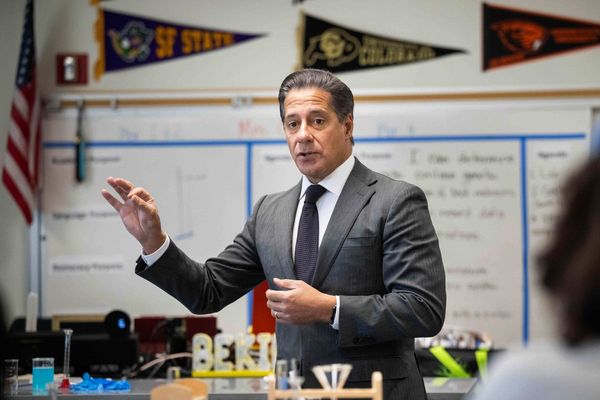
Experts have renewed calls for universal free childcare after data revealed the number of children attending preschool is on the decline.
The data, released by the Australian Bureau of Statistics (ABS) on Thursday, found 4,575 fewer children were enrolled in childcare programs in 2022 compared with the previous year – a 1.3% decrease.
Of those enrolled, just one in four parents were accessing free childcare and three in 10 were paying $5 or more per hour for preschool programs.
Access to fully subsidised care depends on the policies and programs of individual states and territories, which change from year to year.
States such as South Australia heavily subsidise preschool education, as do New South Wales and Victoria, while students from disadvantaged, very low income and at risk backgrounds are also eligible to access specific programs.
Education and care consultant Lisa Bryant said the “crazy mix model system” was confusing for parents and should be streamlined to provide universal, free or very low fee access to all.
“It’s insane and … shows the mess system the is in,” she said. “Chaos is built into the system and it needs to be redeveloped.”
The data found there are 334,440 children aged four or five enrolled in preschool programs – representing around nine in 10 four-year-olds and one in five children aged five.
Overall, around two-thirds of children enrolled in preschool programs paid $4 or less out of pocket per hour after subsidies were deducted and three in 10 paid $5 or more.
At the same time, the number of children enrolled across more than one provider type has increased by 45,363 – a 13% jump.
Bryant said parents were enrolling their children in more than one sort of preschool program to try to capitalise on disparate funding systems. As it stands, states are responsible for preschool subsidies, and the federal government for childcare.
“Rather than having this split over two tiers of government the whole system needs to be radically changed,” she said.
“If you have children trying to form multiple relationships with multiple educators, teachers and other children across services, it doesn’t work.”
The Greens’ education spokeswoman, Mehreen Faruqi, said the fall in the number of children enrolled in preschools across Australia should “seriously concern” the federal government.
“Early childhood education and care should be free and it must be a government priority to ensure educators get the best pay and conditions,” she said.
From July, new childcare subsidy rates introduced by the federal government will be rolled out for families earning up to $520,000 a year.
Households with a combined income of $80,000 or less will have 90% of their childcare subsidised, while higher income families will receive up to a 50% rebate.
It comes amid a major shortfall in teachers, felt most acutely in regional and remote areas.
At a Senate committee in October, John Cherry from Goodstart Early Learning Centre said an additional 9,000 childcare workers were needed to fill 7,000 vacancies the sector was facing to meet a rise in enrolments.
About 90 Goodstart centres were forced to cap enrolments due to staff shortages.
“There’s a huge challenge [in] attracting and holding early childhood teachers, which means that of the 87% of four-year-olds ‘enrolled’ in preschool, many would not have had a teacher for all or part of 2022.”
He said while about one in 10 children weren’t attending preschool, that rose to about three in 10 for children from the most disadvantaged cohort.
“Clearly governments need to do more to remove barriers of access to preschool to ensure that children who would benefit most are able to attend,” he said.
Data released by the Department of Education this month found the average hourly childcare fee was $10.90 in the most recent June quarter, a 4.6% jump compared with the previous year.
The Department of Education was approached for comment.







